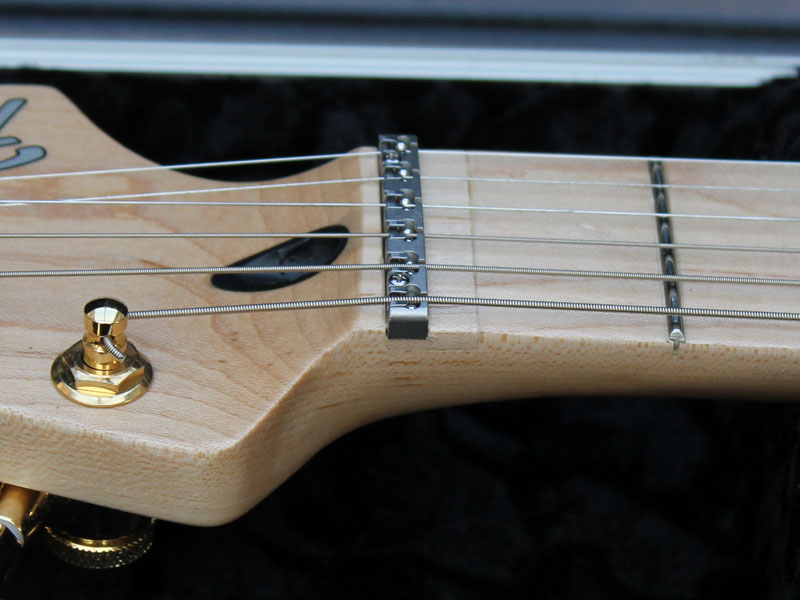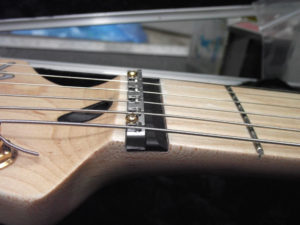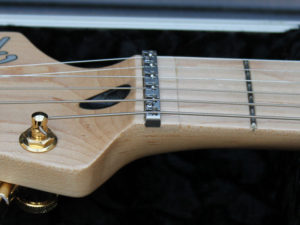
DIY SOS – Fender LSR roller nut refitting

A little knowledge is a dangerous thing, or so they say.
The owner of this guitar fitted a Fender LSR roller nut himself and I have to say showed some skill in cutting the wood away.
Unfortunately he misunderstood how the nut should be fitted and cut away far too much wood.
I tidied the bottom of the hole let in a piece of maple to fill it. I profiled the top of the fillet using a radiused sanding block before gluing then once the glue had dried, accurately cutting the slot for the LSR nut.
The repair was lacquered over using my Clear Satin nitrocellulose lacquer and flatted back smooth.
I did consider replacing the maple up to the first fret to hide the join, but the issue is only cosmetic, the join cannot be felt and to replace more wood than necessary would have increased both risk and cost.
The finished job looks like this. I have used no shims and the action at the first fret is spot on.



hi there. I was wondering…in the before picture there seems to be a black “base” of some sort to the right of the LSR nut. In the after pic the black base isn’t there. Can you please explain this? Thanks.
The black base is provided for people converting a guitar from the earlier “Wilkinson” roller nut to the LSR nut and shouldn’t have been used in this case as it isn’t needed.
Hi, could a nut of this type be fitted to a Gibson Les Paul without weakening the headstock/neck area?
Yes I imagine so, although I’ve never seen it done. The old nut would need to be removed of course and the area filled with new wood before routing for the LSR.
It might look a little odd where the binding ends abruptly, or is extended, though?
Out of interest Steve, what are your opinions on the LSR roller nut vs. a well-cut bone nut?
Hi Ross, I do think that the LSR nut helps keep in tune – no chance of sticking in the slot.